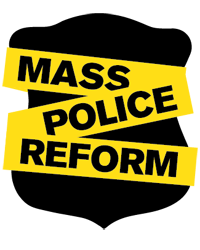Justice in Policing Act of 2020 (PDF)
- Grant power to the Justice Department’s Civil Rights Division to issue subpoenas to police departments as part of “pattern or practice” investigations into whether there has been a “pattern and practice” of bias or misconduct by the department
- Provide grants to state attorneys general to “create an independent process to investigate misconduct or excessive use of force” by police forces
- Establish a federal registry of police misconduct complaints and disciplinary actions
- Enhance accountability for police officers who commit misconduct, including by restricting the application of the qualified immunity doctrine, and by changing the federal statute on police violation of constitutional rights to lower the standard of criminal intent from violation conducted “willfully” to a violation “knowingly or with reckless disregard”
- Require federal uniformed police officers to have body-worn cameras
- Require marked federal police vehicles to be equipped with dashboard cameras.
- Require state and local law enforcement agencies that receive federal funding to “ensure” the use of body-worn and dashboard cameras.
- Restrict the transfer of military equipment to police (see 1033 program, militarization of police)
- Require state and local law enforcement agencies that receive federal funding to adopt anti-discrimination policies and training programs, including those targeted at fighting racial profiling
- Prohibit federal police officers from using chokeholds or other carotid holds (which led to the deaths of George Floyd and Eric Garner), and require state and local law enforcement agencies that receive federal funding to adopt the same prohibition
- Prohibit the issuance of no-knock warrants (warrants that allow police to conduct a raid without knocking or announcing themselves) in federal drug investigations, and provide incentives to the states to enact a similar prohibition.
- Change the threshold for the permissible use of force by federal law enforcement officers from “reasonableness” to only when “necessary to prevent death or serious bodily injury.”
- Mandate that federal officers use deadly force only as a last resort and that de-escalation be attempted, and condition federal funding to state and local law enforcement agencies on the adoption of the same policy.
